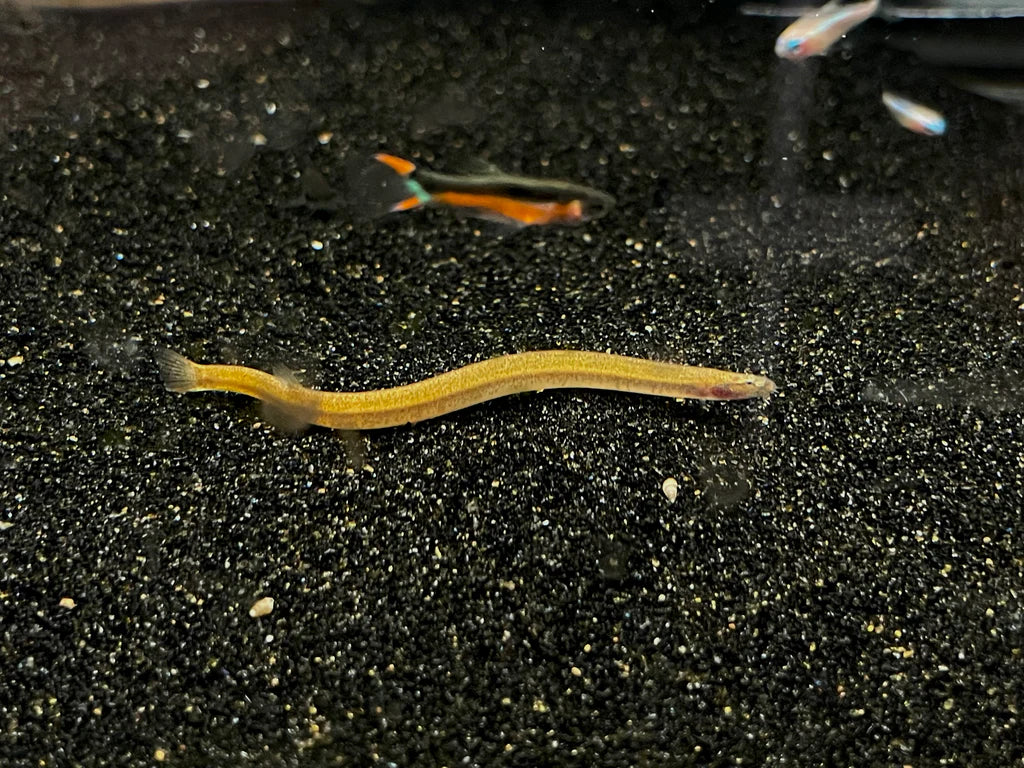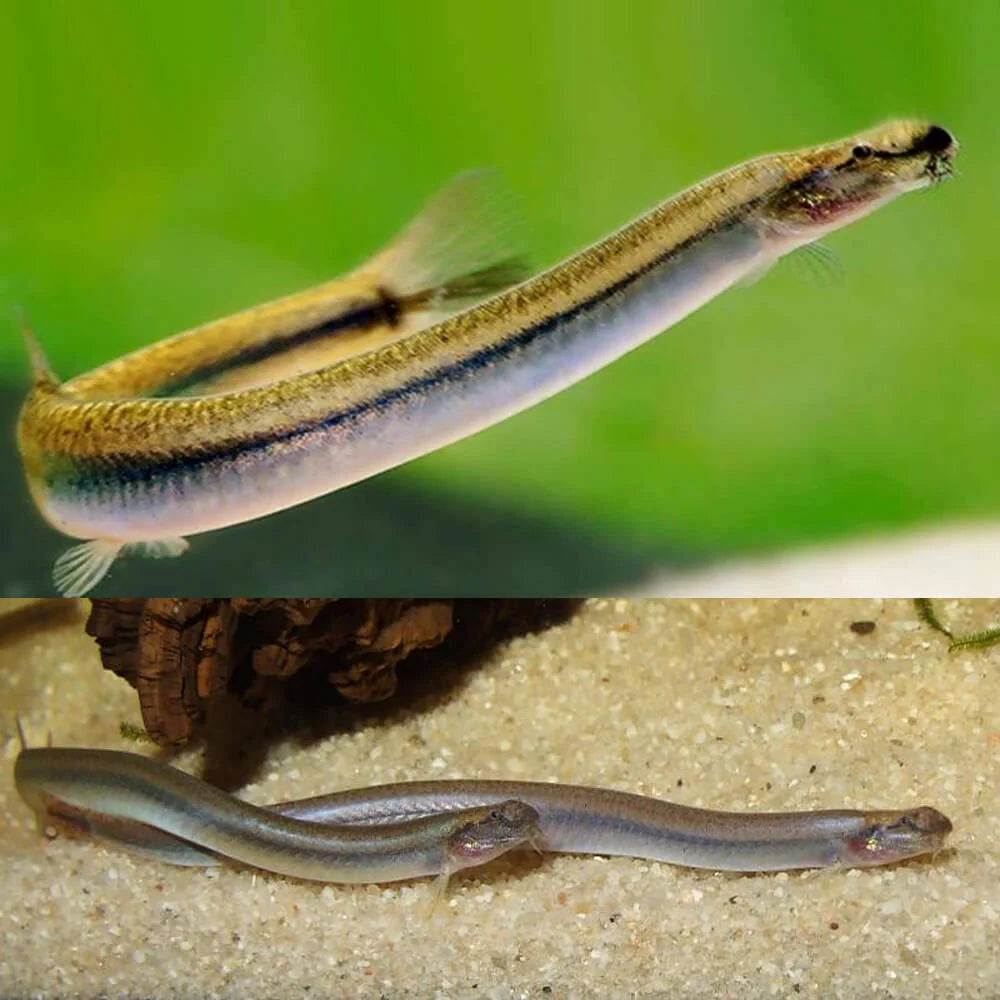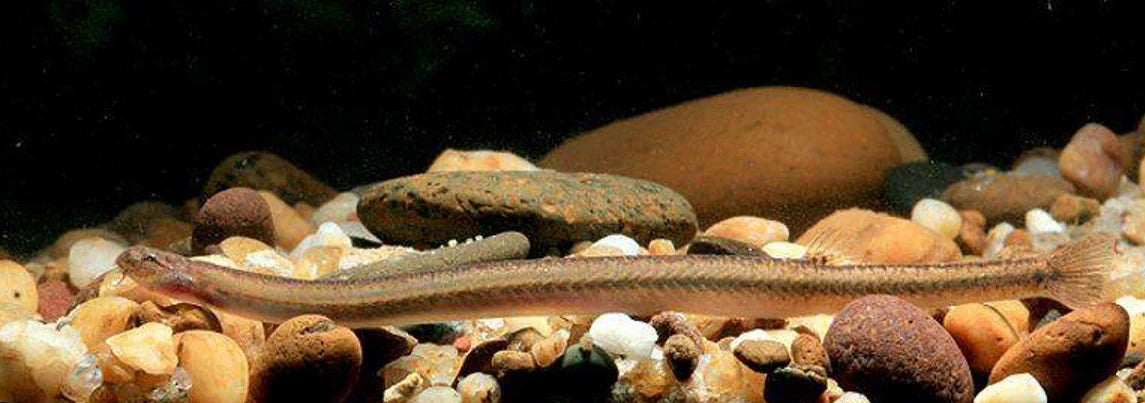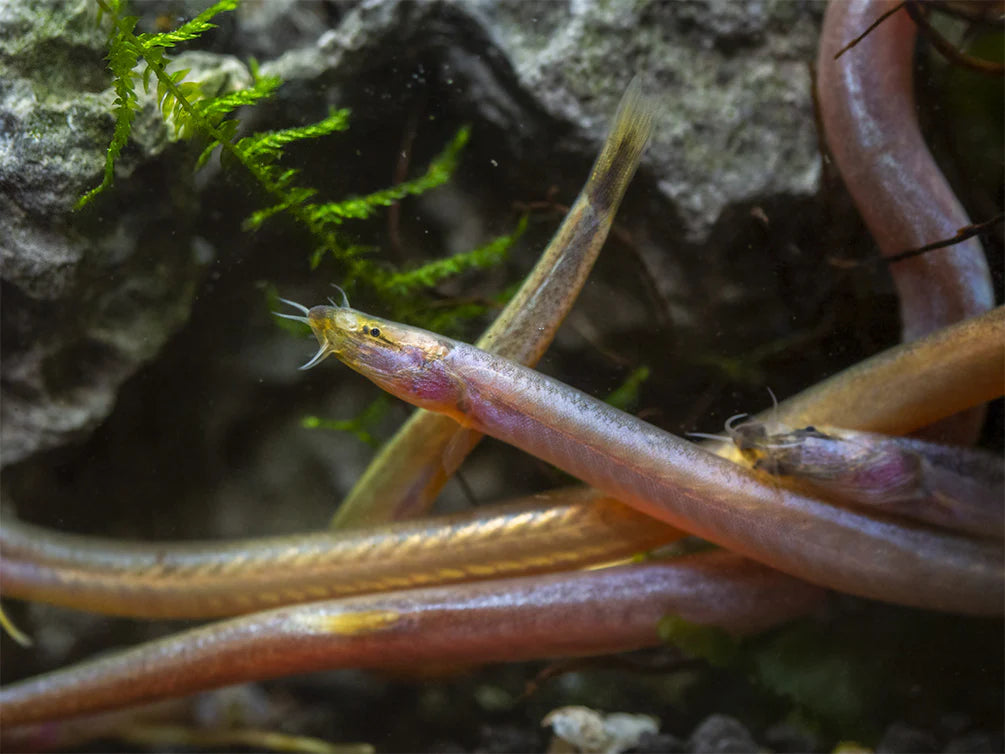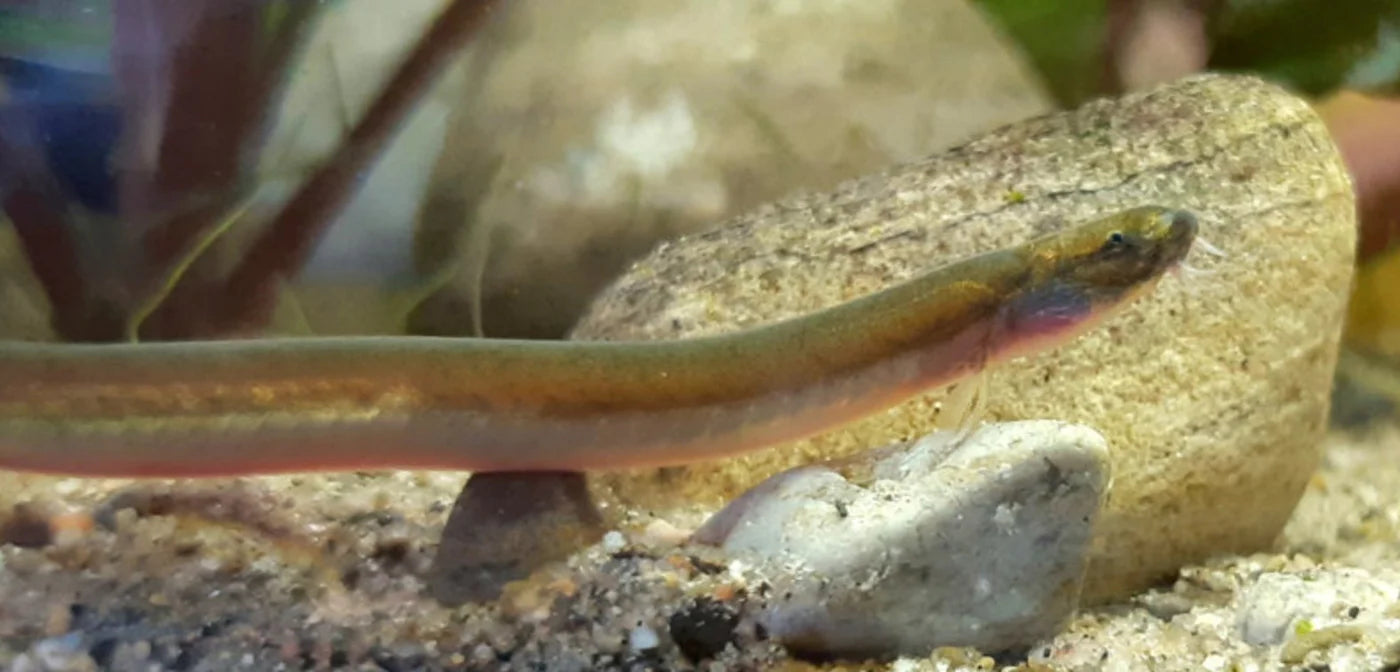Golden Kuhli Loach (Pangio doriae) - Live Fish
Golden Kuhli Loach (Pangio doriae) - Live Fish
Total items
Product subtotal
Detailed Description
Detailed Description
The Golden Kuhli Loach (Pangio doriae), also known as the Golden Striped Kuhli Loach, is a unique and attractive species of loach that is a variation of the more commonly known Kuhli Loach (Pangio kuhlii).
The Golden Kuhli Loach, a vibrant golden-yellow variation of the Kuhli Loach, is prized for its slender, eel-like body and peaceful temperament. This nocturnal bottom-dweller, native to Southeast Asia, reaches 3.5-4 inches and features dark vertical stripes. They thrive in groups, exhibiting a "wiggly" swimming motion and enjoying burrowing in soft substrates. Ideal for community tanks, they coexist well with peaceful species like tetras and Corydoras.
These omnivorous loaches scavenge for food, accepting sinking pellets, live/frozen foods, and detritus. They prefer warm, slightly acidic water (74-82°F, pH 6.0-7.5) with soft to moderate hardness. A well-planted tank with fine sand, hiding spots, and gentle water flow replicates their natural habitat. Breeding is challenging, requiring specific conditions.
Golden Kuhli Loaches are sensitive to poor water quality, requiring regular maintenance. They live 6-10 years with proper care and are prone to stress if insecure. A minimum 20-gallon tank is recommended, avoiding aggressive tankmates.
Product features
Product features
Materials and care
Materials and care
Merchandising tips
Merchandising tips
Share

